Abstract
Shortly after Zea mays L. plants were exposed to 14CO2, most of the radioactivity in the kernel occurred in the free monosaccharides, glucose and fructose. Later the proportion of 14C in sucrose increased and that in the monosaccharides declined. These data have been interpreted as showing that the translocated sugar is hydrolyzed prior to or during its movement into the storage cells of the endosperm. This hydrolysis appears to occur in the “pedicel region” of the kernel. After entry into the endosperm tissue, sucrose was rapidly resynthesized from the monosaccharides prior to its utilization in starch synthesis.
Full text
PDF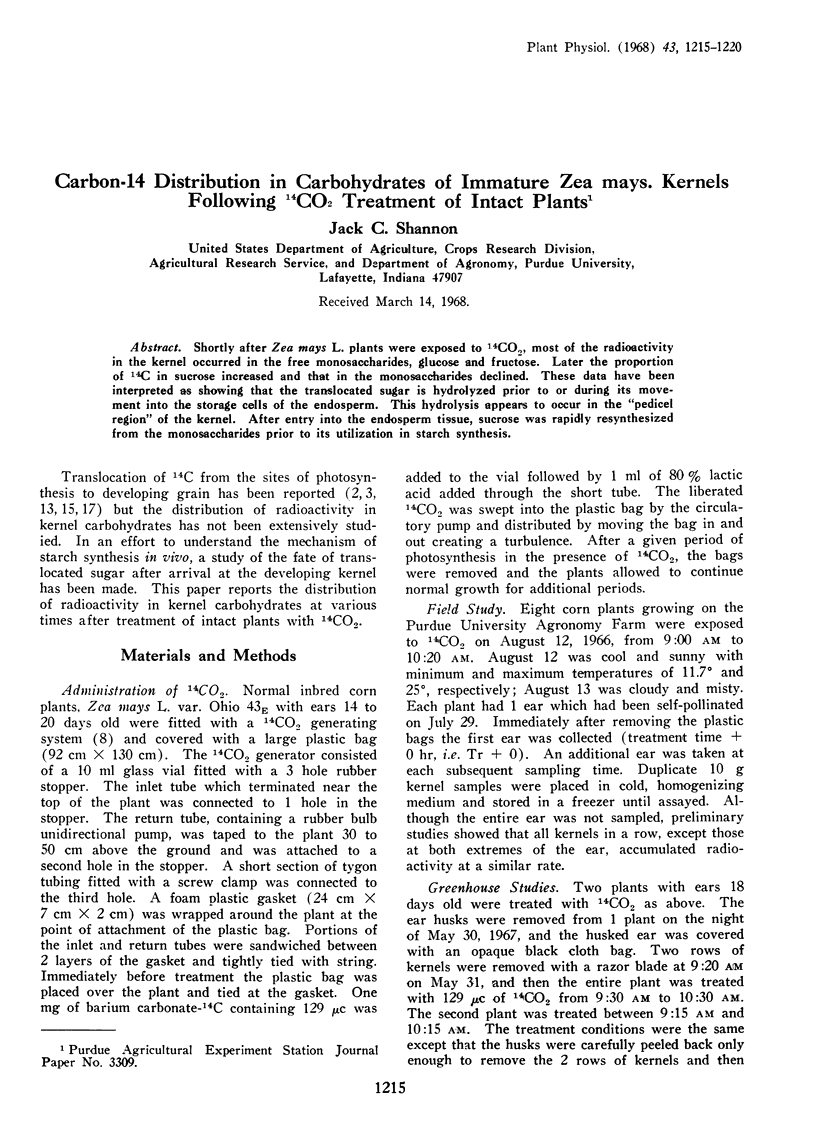
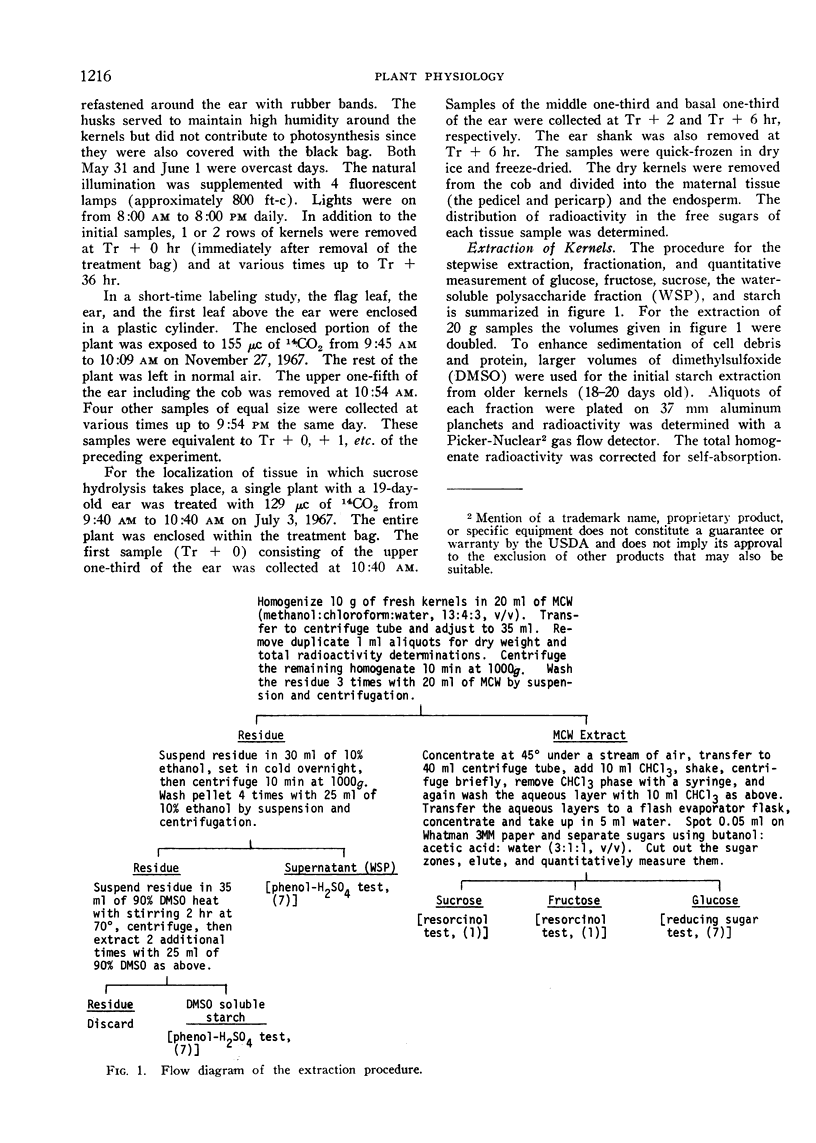
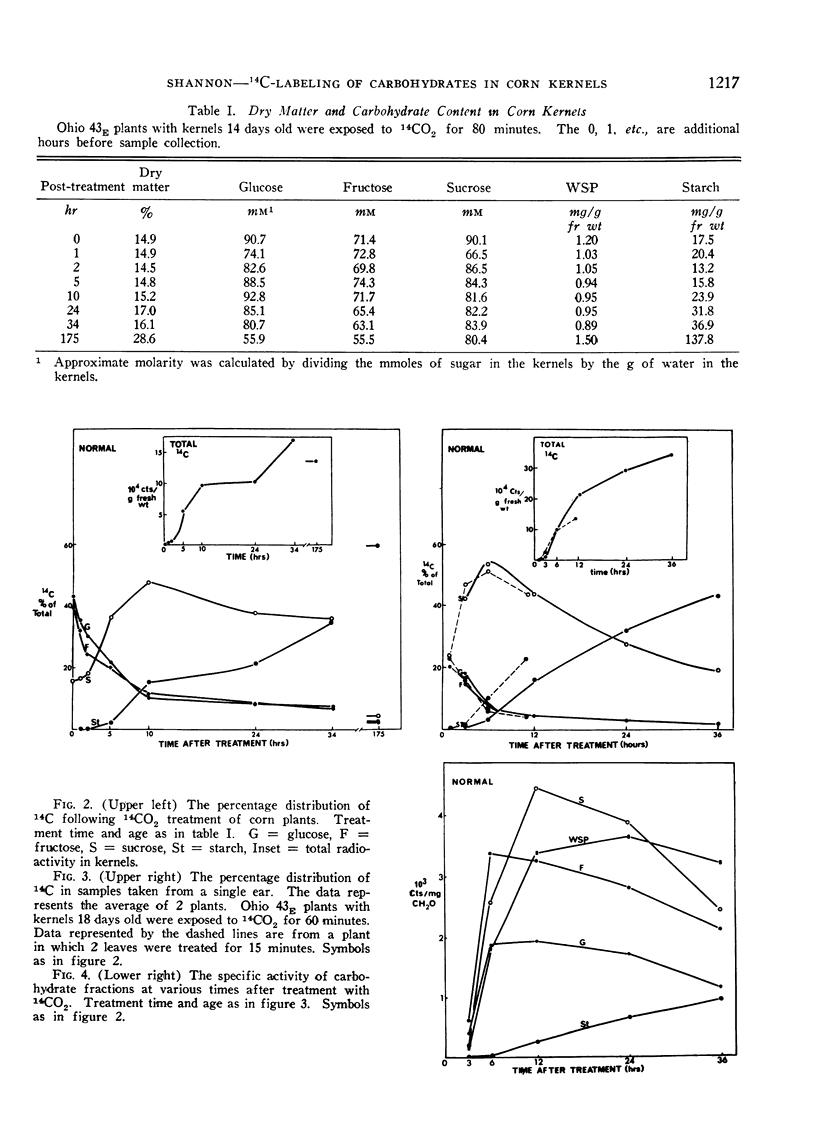
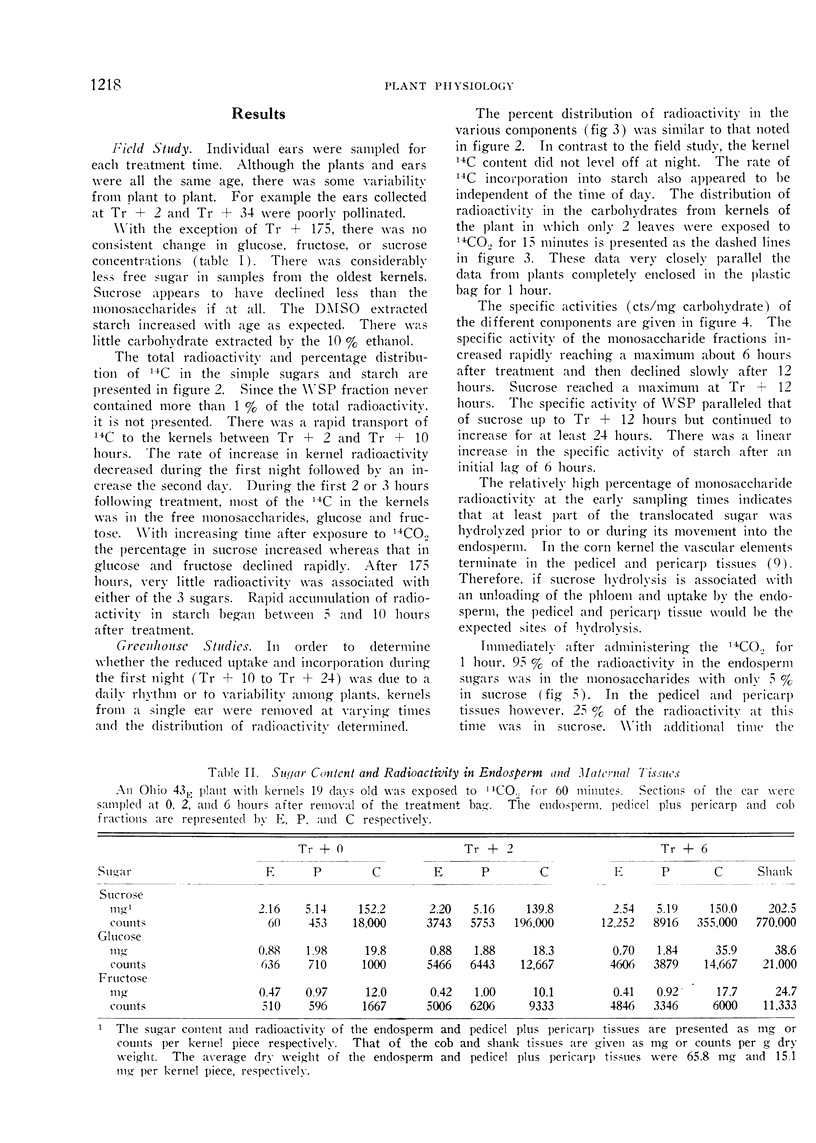
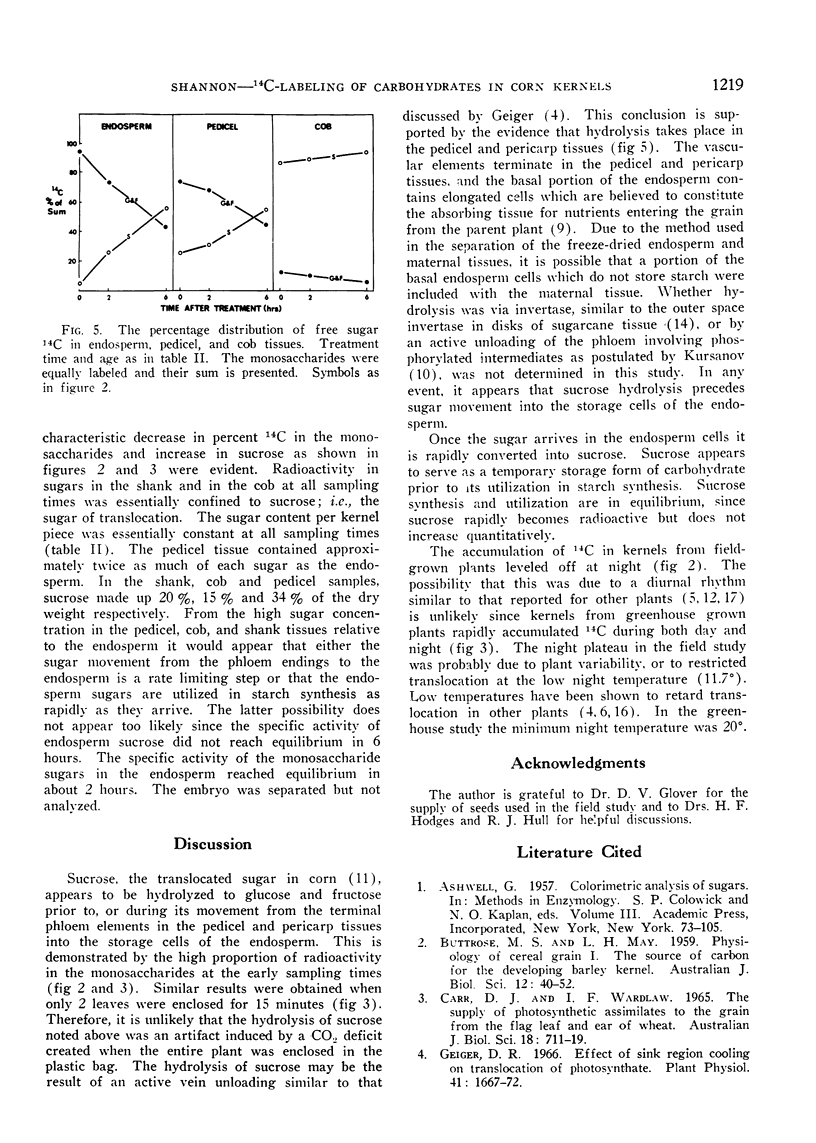
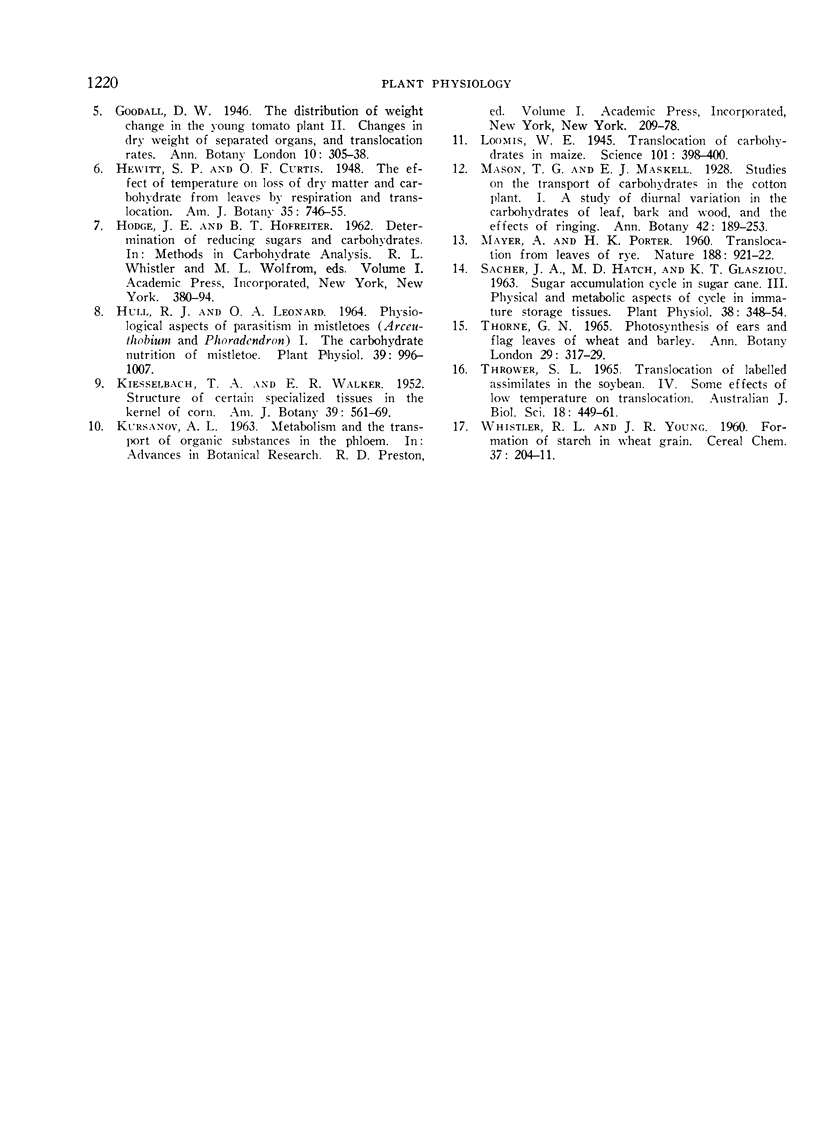
Selected References
These references are in PubMed. This may not be the complete list of references from this article.
- Geiger D. R. Effect of sink region cooling on translocation of photosynthate. Plant Physiol. 1966 Dec;41(10):1667–1672. doi: 10.1104/pp.41.10.1667. [DOI] [PMC free article] [PubMed] [Google Scholar]
- Hull R. J., Leonard O. A. Physiological Aspects of Parasitism in Mistletoes (Arceuthobium and Phoradendron). I. The Carbohydrate Nutrition of Mistletoe. Plant Physiol. 1964 Nov;39(6):996–1007. doi: 10.1104/pp.39.6.996. [DOI] [PMC free article] [PubMed] [Google Scholar]
- Sacher J. A., Hatch M. D., Glasziou K. T. Sugar Accumulation Cycle in Sugar Cane. III. Physical & Metabolic Aspects of Cycle in Immature Storage Tissues. Plant Physiol. 1963 May;38(3):348–354. doi: 10.1104/pp.38.3.348. [DOI] [PMC free article] [PubMed] [Google Scholar]


